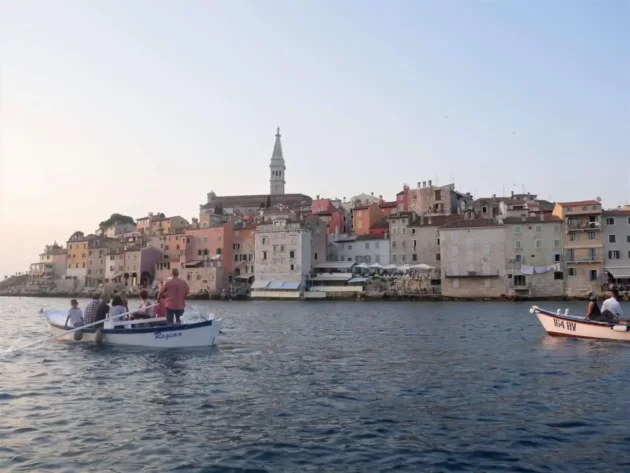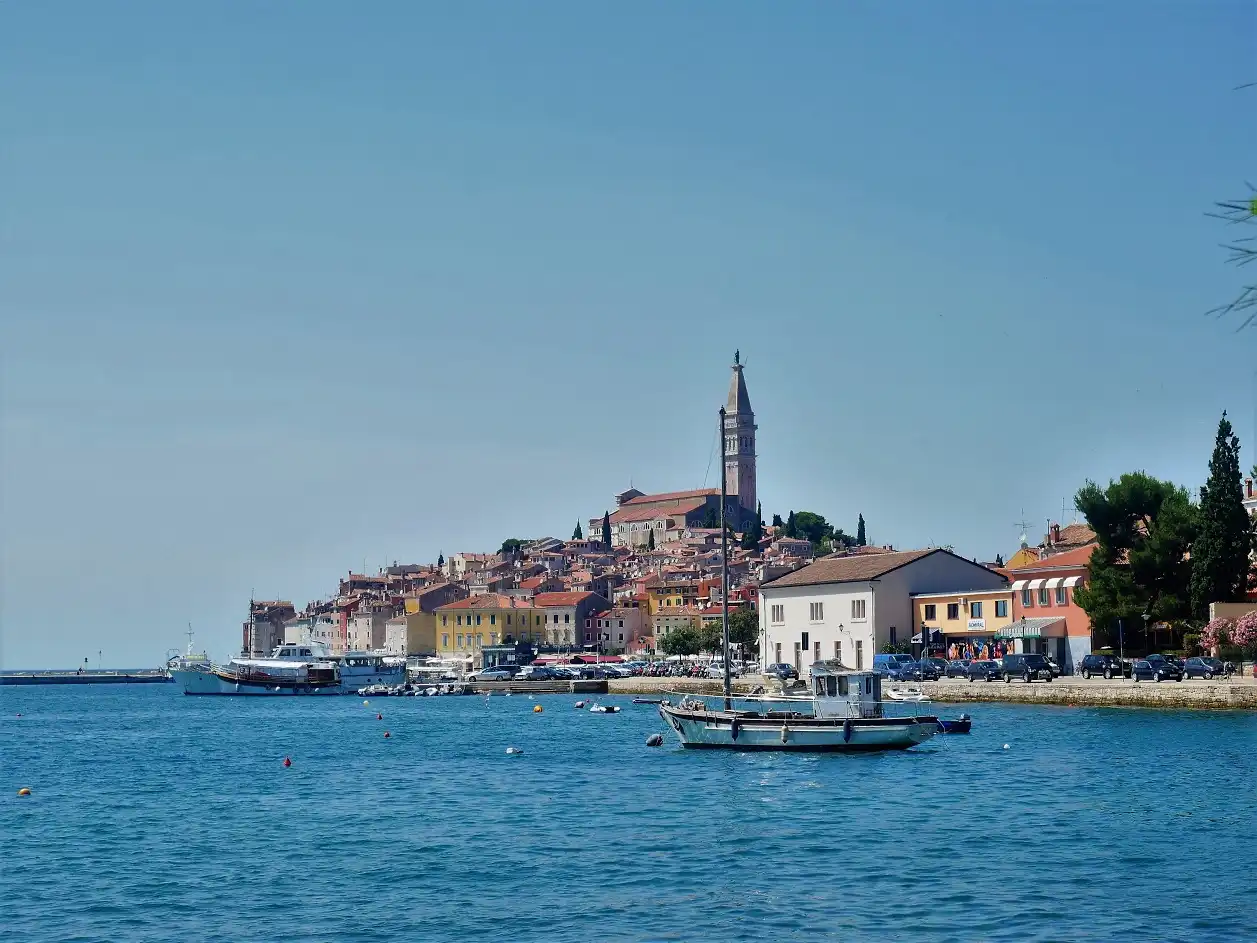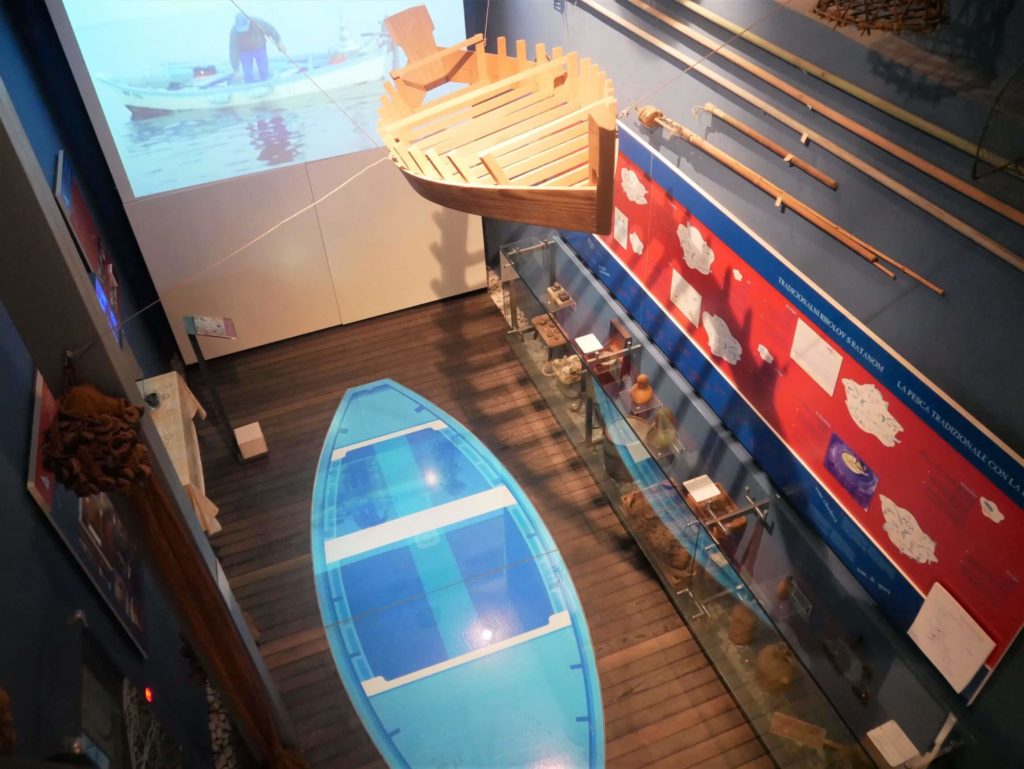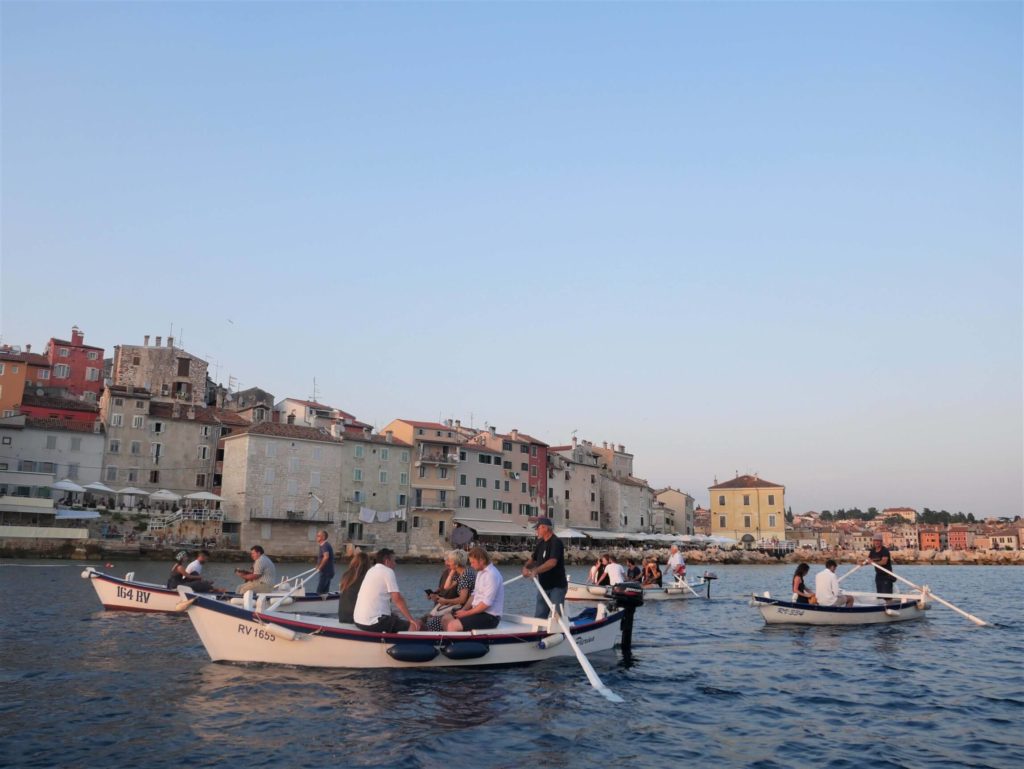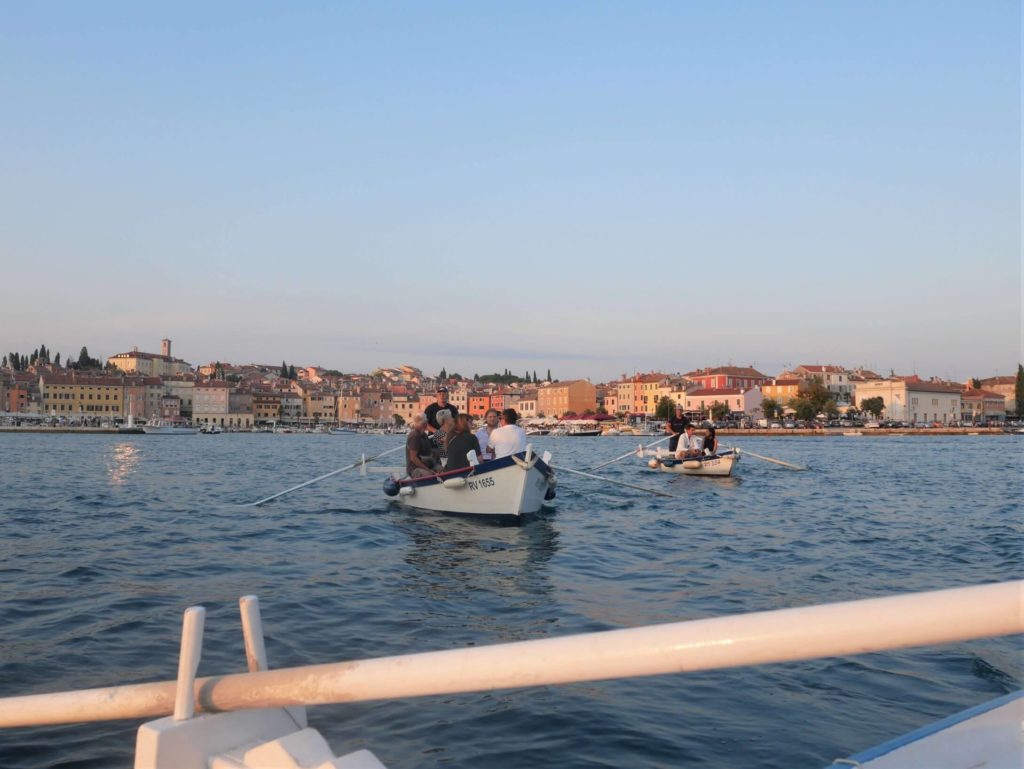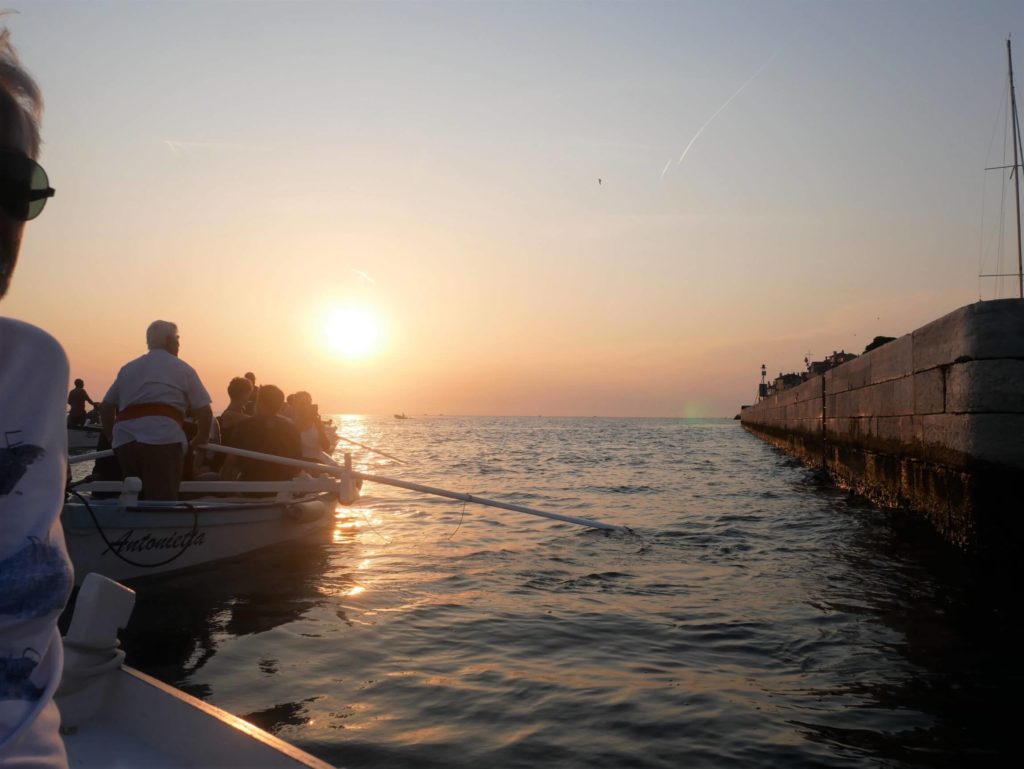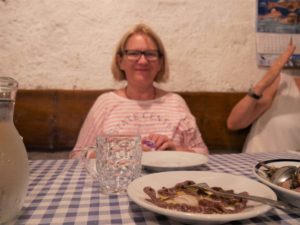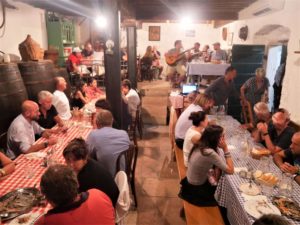‘Rovinj changed so much since I was a little boy’, said an old fisherman who was rowing our boat. ‘But one thing hasn’t. We still row our batanas…’
What’s the story behind that small boat batana you can see everywhere in Rovinj? Well, it’s a story about the city, its people and a symbol of change.
Rovinj and its batana
Rovinj, one of the most beautiful cities in Croatia (and one of my favourite) has such a fascinating history. It was founded as a small town located at the island for the protection from numerous enemies that were attacking the city in those old days. It grew throughout the time, and soon the island got connected with the inland. However, you can still recognise that original island today in a round shape of the old town of Rovinj.
Located at the Adriatic coast many of its inhabitants were fishers. One of the biggest Croatian fish production company, Mirna, is still located there.
Today, its narrow stone streets are filled with art galleries. Many artists are exhibiting their paintings and sculptures outside their shops, so a walk through the old town of Rovinj sometimes feels like a walk through an open-air museum.
⤷ Read my Rovinj Travel Guide on a link here.
But, how is that related to the story about batana?
This is a story about all those different parts of Rovinj’s history and heritage. And how they are interpreted in a great cultural tourism story today.
Batana boat in Rovinj
Although I’m spending some time each year in Rovinj, it was this summer that I joined the batana parade for the first time. It’s organised twice per week during the summer months by the Batana Eco-Museum. We had visited it a few days before and learned about that simple small boat Rovinj’s fishermen were using. It’s specific because of the flat bottom, which allowed them to go very close to the shore when catching fish. Batana boats are usually painted in a combination of white and blue, sometimes with red details. They could have the mast, but the majority you can see today have paddles only.
Batana Eco-Museum in Rovinj
We started our journey at the Batana Eco-Museum. It’s a small cultural centre and a museum, filled with photos of batana boats, books and things related to fishing. But, what I loved the most about their interpretation of the Rovinj’s cultural heritage is that you’re becoming a part of the story, too. You can see a typical living room from Rovinj with its painted walls and an old fashioned sofa. You can also learn about the fish and by pressing the interactive screens, see their shape and learn more about them.
Batana ride around the old town Rovinj
However, the story about batana isn’t finishing there. Twice per week, the museum is organising the batana boat parade. We’ve reserved our spots at the museum a few days before. It’s starting at 7:30 PM, just in time to see the sunset. There were six or seven boats in a parade and depending on their size they could fit 4 to 6 passengers. There were five of us in ours, so it was quite an intimate ride. The fisherman who was rowing our boat told us the stories from Rovinj’s past. The way life looked like sixty years ago when he was a small boy. But, also about life in Rovinj today. About living in its centuries-old houses. And the way they are catching the fish nowadays.
We truly enjoyed his stories while slowly drifting around the old town. It was so quiet at sea. We could only hear the sound of paddles gently touching the sea. And two musicians singing traditional songs in one of the boats. He showed us some buildings and caves we could only see from a boat. And waved to an old lady looking through the window on one of the highest floors of a house with the red façade. ‘She’s one of the oldest inhabitants in Rovinj…’ he smiled.
After that slow ride filled with stories and his love towards Rovinj, we’ve come to our destination – a small fishermen tavern where we were about to have dinner.
Dinner at a local tavern Spacio in Rovinj
We were on the last boat, so there were already around 30 people in a tavern when we came. It was filled with music, people laughing and two waiters welcoming us with a glass of wine. It was in such a contrast with a quiet batana ride. But, somehow, we all needed it.
Being a fishermen town, dinner at the Spacio tavern in Rovinj fulfilled our expectations. We started with some marinated sardines and salted anchovies. For the next course we’ve got some delicious mussels. And the main one was a plate full of local grilled fish. Tuna, sardines, squids and many other species I didn’t know were some of the best fish I ever had in my life. Everything was served with a delicious salad and bread and paired with an excellent local white Malvasia wine. Although we couldn’t even finish our fish (we were so full), we’ve found some space for a local dessert fritule in the end.
Not only the food made that dinner so amazing. But, also the traditional interior of the Istrian tavern (called konoba in Croatian) with its large wooden barrels, pictures of fish and some other old objects we were guessing the purpose of. Those musicians that accompanied us during the batana parade were singing some local songs and were making the atmosphere just lovely.
Learning about batana and a local fishermen history in this way was indeed a fantastic experience for us. I felt like stepping into the past a bit when life was slower, harder, but also filled with a different kind of happiness.
Would you like to join the batana parade or a fishermen dinner at Spacio while in Rovinj? Check out the Batana Eco-Museum for more information. You’ll need to make your reservation a few days in advance at the Batana Eco-Museum, so be sure to plan your visit in advance.

